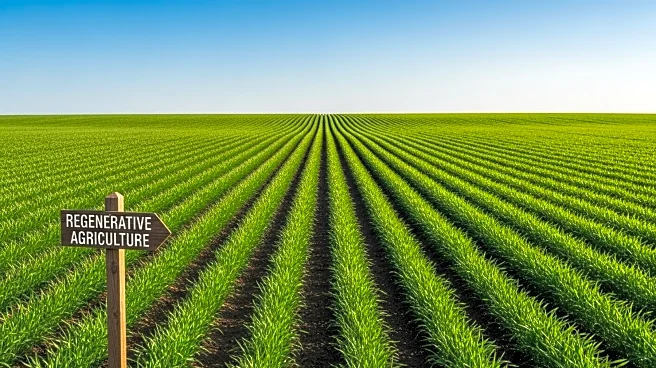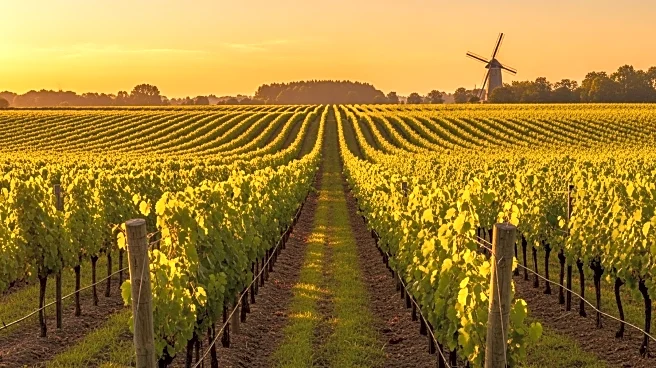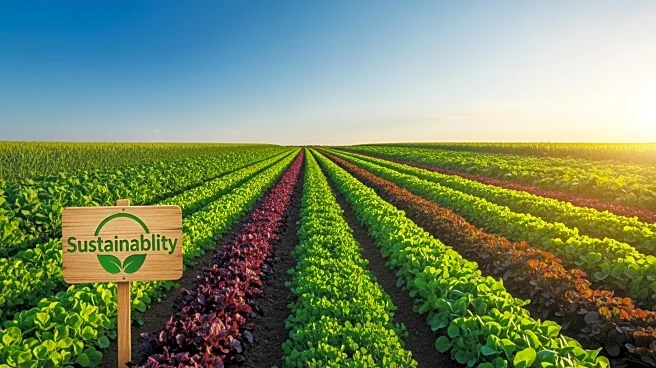What is the story about?
What's Happening?
Regenerative agriculture is gaining attention as a sustainable farming practice that emphasizes soil health, biodiversity, and natural carbon sequestration. According to the UN Food and Agriculture Organization (FAO), agriculture and food systems are responsible for approximately one-third of global anthropogenic greenhouse gas emissions. In 2022, emissions from global agrifood systems reached 16.2 billion tonnes of carbon dioxide equivalent, marking a 10% increase since 2000. This includes emissions from crop and livestock production, land use changes, food processing, transportation, and waste. Regenerative agriculture practices, such as cover cropping, reduced tillage, crop rotations, composting, and agroforestry, aim to enhance soil organic matter and turn agricultural soils into significant carbon sinks.
Why It's Important?
The significance of regenerative agriculture lies in its potential to mitigate climate change by reducing greenhouse gas emissions from the agricultural sector. As food system emissions alone could push global warming beyond the 2°C threshold, adopting sustainable practices is crucial. Regenerative agriculture not only helps in carbon sequestration but also improves soil health and biodiversity, which are essential for long-term agricultural productivity. This approach could lead to more resilient food systems, reducing the environmental impact of agriculture and contributing to global climate goals.
What's Next?
The adoption of regenerative agriculture practices is expected to grow as awareness of their benefits increases. Policymakers and industry leaders may focus on incentivizing these practices to accelerate their implementation. Additionally, research and development in sustainable farming techniques could further enhance the effectiveness of regenerative agriculture, making it a cornerstone of future agricultural policies.
Beyond the Headlines
Regenerative agriculture also presents ethical and cultural implications, as it encourages a shift from conventional farming methods that often deplete natural resources. By promoting practices that restore and maintain ecological balance, it aligns with broader environmental and social justice movements. This shift could lead to changes in consumer behavior, with increased demand for sustainably produced food.
AI Generated Content
Do you find this article useful?













